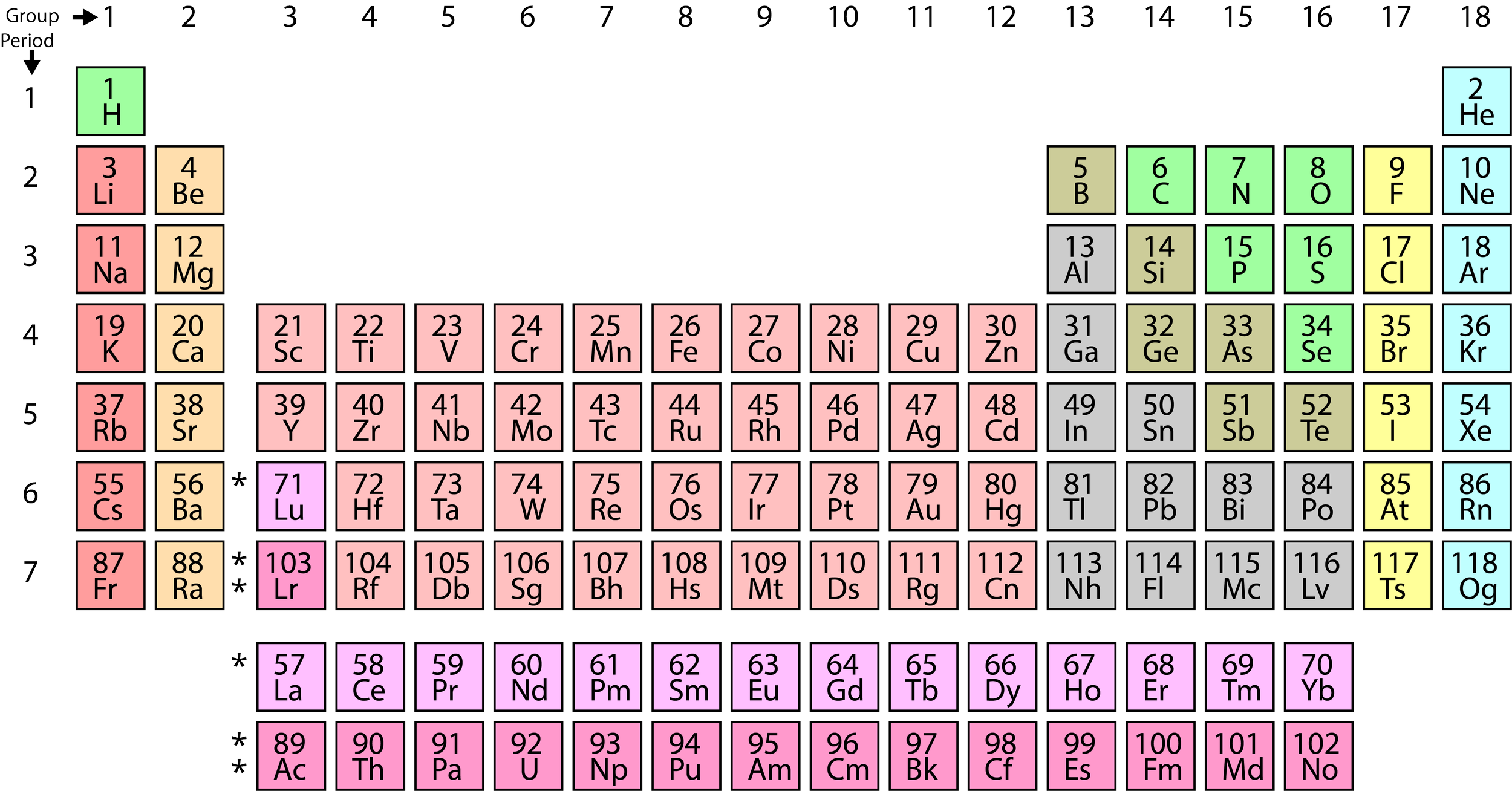Redesigning the Periodic Table
The more I stared at it, the less happy I was with the beloved checkerboard. I could connect it to quantum mechanics, but couldn’t it somehow express the quantum mechanics? How did the hydrogen atom states go again?
I remembered there was a pattern inherited from the group theory of the rotation group SO(3): for total angular momentum L, there were 2L +1 independent directions. Then for these directions, there were 2 spin states, ±1/2. Where exactly were these levels of 2(odd-numbered), energetically identical states? The only place I can see it is with the metals.
Plus there is an annoying cheat: The lanthanides and actinides are supposed to be squeezed in there where those “*” are. I’m not the first person to think that maybe we could do better. Theres a paper here by Kostic et al. and it’s in a long line of periodic tables drawn to emphasize different stuff.
One thing that struck me was this odd little fact: ignoring spin, there are exactly n^2 states in a shell. Maybe you could express everything as neat little squares! Or hexagons! (I had been playing too much Settlers of Catan.) But actually, it’s tricky: these squares don’t fill up in quite the order you’d expect from hydrogen atom energy states.
Actually, it turns out that by far the hardest part is squashing everything down to 2D. How do you fit 5 6 or 7 squares to a page? With these thoughts swirling, and with some tweaking on a rainy day, I managed to get a periodic table I was happy with. Instead of squares, I found myself going the Aztec pyramid route. Here it is:
my periodic table
First of all, you can see several quantum rules right there: pyramids for every energy level (radial+ angular quantum numbers): n = r+l, each with n rows, and each row with 2l+1 wave function states, each state with two spins, up and down. The spin states get filled according to Hund’s rule: all down (aligned) then filling out the shell.
Note how the pyramids are nested: this is a feature of what’s called Maedelung’s rule: start filling the s orbital of the next pyramid, after you’ve filled up the p orbital of the last pyramid. Why? No idea. But the nice thing is, once you nest your pyramids like this, you get your energy states in the right order. The y-axis is outermost electron energy. So in a sense, my periodic table tells you how Maedelung’s rule works for all the shells.
The Lanthanides are no surprise, they just appear as the next rung on the n=4 pyramid. Nice!
What the heck? The nobel gasses all have a filled p-orbital. But if you have a filled s-orbital (like Cesium) or f-orbital (like Zinc), then you are just another reactive element. I mean Mercury is weird to be liquid, but it’s no Randon, a freaking gas at Z=86!! What’s so special about p orbitals? Also Helium, the least reactive element of all, should actually be chemically kind of similar calcium, which forms salts and gets dissolved and stuff!
My table is a little more confusing looking, but you could say it actually it reflects the confusing parts about quantum mechanics and chemistry. With all the noble gasses lined up in the OG table, you think you get it, but actually there’s a lot more mystery waiting to be explained. In defending my table, I’d argue you shouldn’t think you understand something better than you do.
I’m pretty happy with my table. In making it, I got a QM of hydrogen refresher and learned some new chemistry like Maedelung’s rules. I would highly recommend trying to redesign something you take for granted. Even if you don’t beat the standard version, you will certainly learn a lot and come to appreciate the design decisions that went into something you think you understand.

